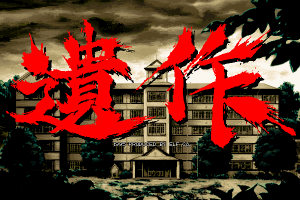

I wanted to create a piece that embodied my time at Amanojaku, and tried to captured that blind, naive faith, as well as the gratitude I have towards my teachers for teaching me everything.Īt Berklee I gained a lot of technical knowledge, but I also learned that music boils down to something much simpler. Every performance could be the last time we see these people on stage together, and that faith and bond that’s so powerful can tragically be broken. One of the things I enjoy about good taiko groups is that you can see the faith in each player and the bond between them, but there’s also a tremendous sense of evanescence and fleetingness. It’s like love – where our relationship with taiko changes and evolves with age. It’s not that we lose faith or become disillusioned as we grow older. My interpretation is that in order to play kumidaiko well, a person has to have a faith in what they’re doing that’s so strong it’s almost blindly naive. The word “wakasa” means “youth,” but I don’t think he was purely referring to physical strength. But there’s also parts that require the players to go all out, and I just think taiko being played all out at a high level sounds so beautiful.įrom a more philosophical perspective, I remember Kenny Endo telling my parents that “kumidaiko is a ‘wakasa’ thing.” I never really understood what that meant until now, when I’m about the age Kenny was when he said that. In Rei, some parts are designed to sound like they’re coming from far away, or like a sound you hear in a memory. You can tell if a taiko is being played loud or soft by the timbre, even if we turn the volume of the recording up or down. From a technical perspective, one thing I learned through countless recording sessions, is that taiko is much like the human voice, where the listener can recognize a whisper from a shout by the timbre, regardless of the volume. Berklee helped me see taiko from an “outsider’s” perspective, and it helped me re-discover what I think makes taiko great. What’s not so clear is how Berklee and my own perspective comes into the picture. There’s a lot of space that players can use to express themselves, as well as the values of the group. The movements and the structure of the piece is very Amanojaku. It uses 4 Odaiko, and Asano makes the best Odaiko in the world. The piece begins by quoting Edo Bayashi, and it goes into a Chakuto-type section – both are pieces taiko learners would benefit from becoming familiar with. I think these elements are easily recognizable in the piece. From there I took it a step further and tried to create a piece that would showcase the staff, the craftsmanship of Asano Taiko, and be something that Watanabe Sensei would recognize and say, “Yes, that’s my lineage.” They also wanted something that embodied my experiences at Amanojaku and Berklee.įrom a composer’s perspective, this already means a lot of things: the piece can’t be too technical, it needs to be educational, it needs to be flexible in terms of players and drums, and it needs to be open enough to allow the player to express him or herself. When I got the call to write Rei, I was asked to write a piece that could be performed by LATI staff and taught to students at Asano Taiko US. It’s pretty rare to be commissioned to write a piece in the taiko world, where it’s usually the artists writing pieces for themselves or their students. If possible, I’d like to talk about “Rei,” the Odaiko composition I wrote for Asano Taiko US, because it really embodies my taiko story up until now. In this interview, we spoke with Isaku about his composition “Rei.” He talks about the piece the letter below: Fuji Odaiko Contest in 2000, and Hokkaido in 2003. He is also a two-time National Odaiko (large drum) Champion, becoming the youngest person to win highest honors at the Mt.
ISAKU TV
His resume includes major corporate events and TV commercials for global brands such as Boeing and Toyota, performances at Carnegie Hall and Lincoln Center, and tours including nations such as Brazil, China, Thailand, United Arab Emirates.įormerly a principal drummer of premiere ensemble Amanojaku, he holds a Bachelor of Music from the Berklee College of Music and a Master of Arts from Longy School of Music of Bard College. Isaku Kageyama is an eclectic and versatile taiko performer, hand percussionist, and drummer, currently working with groups such as Asano Taiko UnitOne, film-scoring extravaganza The Masterpiece Experience, world music group Rhythm of the Universe, anime band Soulandscape, and the LA Japanese Music Ensemble.


 0 kommentar(er)
0 kommentar(er)
